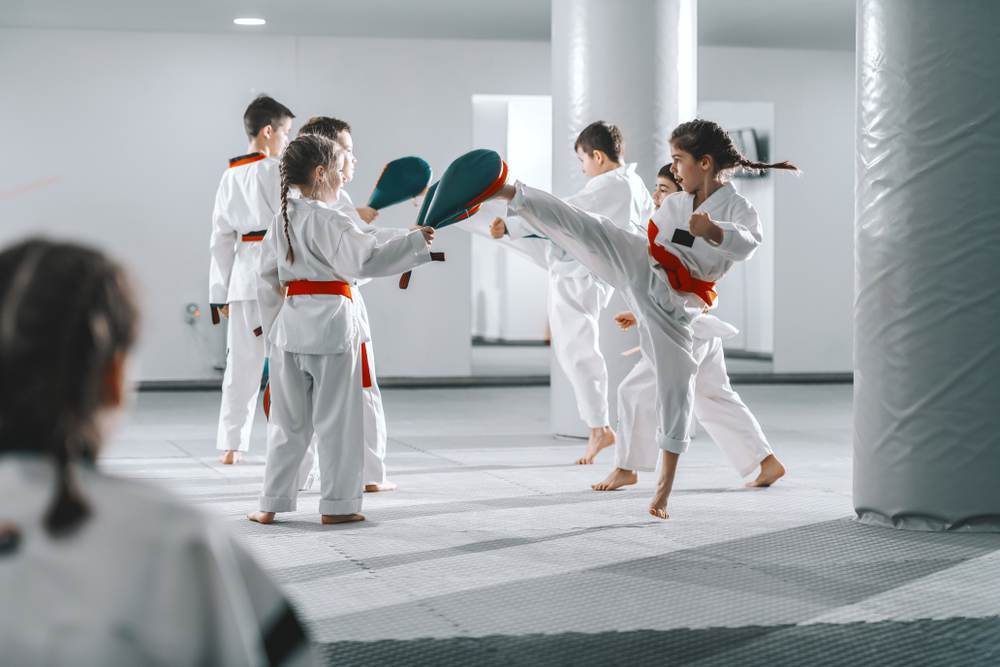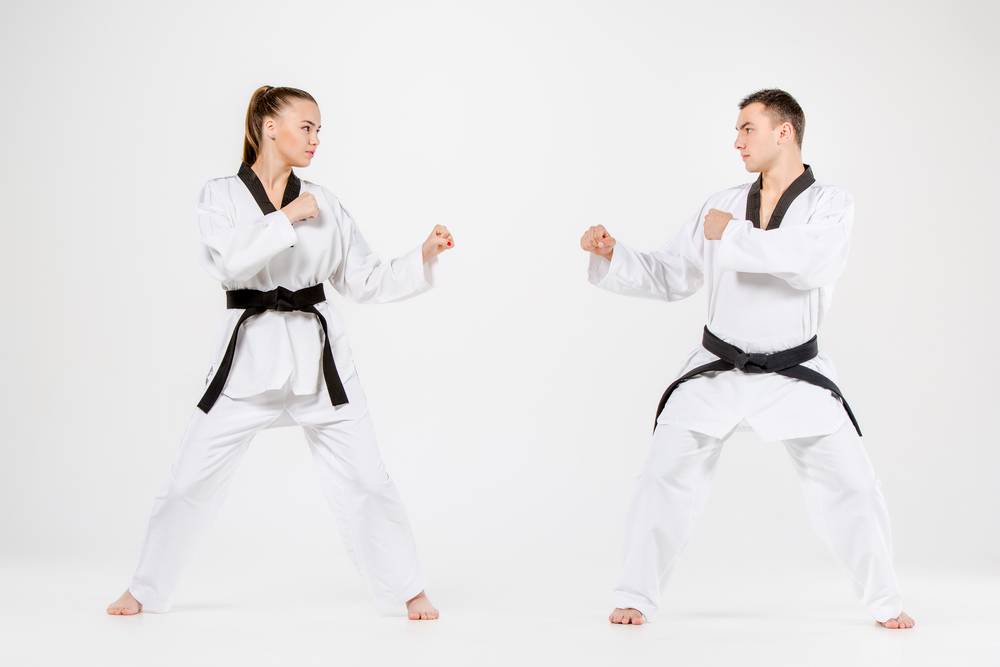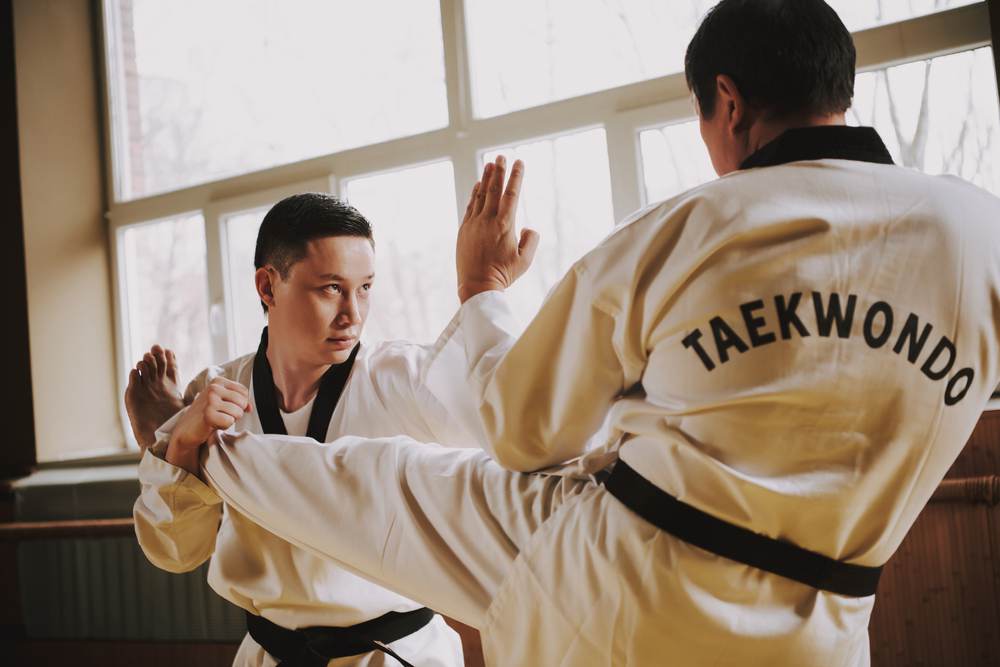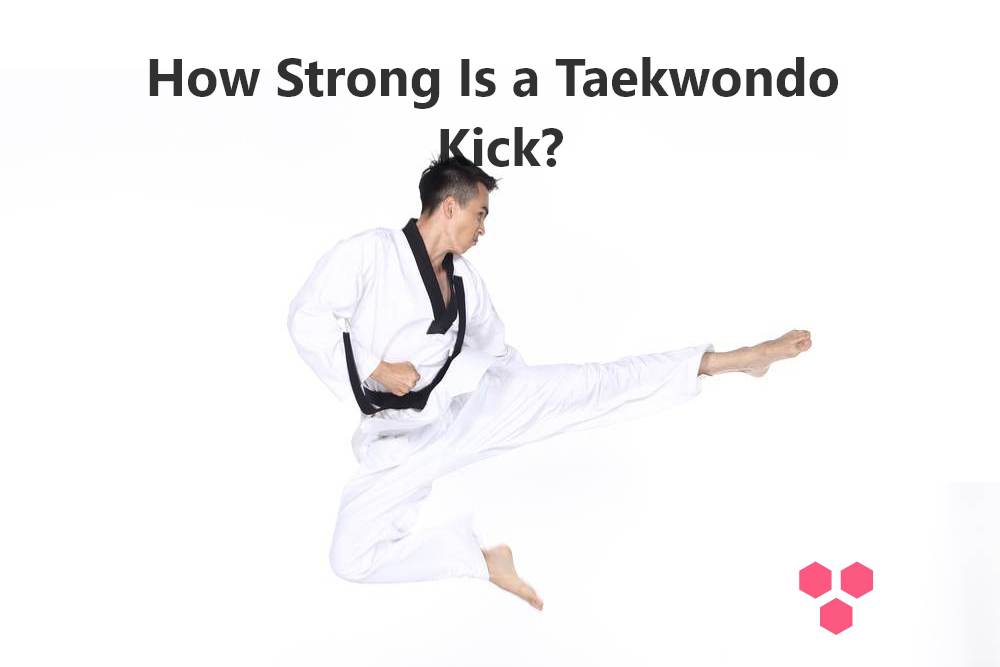Wait what!? Taekwondo weapons? That doesn’t sound right! Does taekwondo really use weapons?
Well, as you already know, the literal translation for tae kwon do is “kicking”, “punching”, and “the art or way of.”
The logical implication here is that since Taekwondo primarily involves punching and kicking techniques there are no weapons used in the art (especially when practiced as a sport).
Strictly speaking, this is true. There are no real “Taekwondo weapons”.
However, outside the ring, taekwondo occasionally makes use of weapons, and there is a list of Taekwondo weapons that many practitioners train with.
Interestingly, some taekwondo styles such as ATA Martial Arts (formerly known as the American Taekwondo Association) have adopted the use of some of these weapons.
Now, let’s dive in and learn all about them!
What Are the Weapons of Taekwondo?
Although taekwondo is primarily based on the use of hands and feet, there exist some weapons used in the art.
These weapons are not unique to Taekwondo but they have been adapted for use by a few taekwondo schools and practitioners.
Below are some of the weapons used in taekwondo.
Jahng Bong: Bo Staff
The Jahng Bong or Korean Bo Staff is often where beginners start their weapons training.
It is a simple weapon, just a long wooden pole. But with practice, you can learn how to use it to block attacks as well as deliver powerful strikes with accuracy and precision.
Though simple, the Bong is quite versatile.
Aside from blocking and striking, the weapon can be used for sweeping and entrapping, as well as unusual moves like throwing dust into your opponent’s eyes.
The Bong or Korean bo staff is probably the most common weapon seen in Taekwondo.
Bahng Mahng Ee: Eskrima Sticks
Though used in Taekwondo, Eskrima sticks come from Phillipino martial arts.
These two short sticks can be used for both striking and blocking techniques.
They’re lightweight and easy to handle, making them a good weapon for beginners.
They are usually made of rattan which is very durable despite its lightweight. They do not splinter like wood and can be used as a defense against blades.
Modern Eskrima sticks are sometimes made from aluminum or high-impact plastics.
Dan Bong: Short Stick
The Dan Bong is a short stick similar to Eskrima sticks, but a little shorter and with a rope on one end.
At only 8 – 12 inches long they are ideal for carrying a concealed weapon. Plus, they are useful for short-range attacks in close quarters.
Dan Bong is often taught as part of the Hapkido curriculum, which is a Korean martial art similar to Brazilian Jiu Jitsu.
The sticks are used to reinforce joint locks, poke pressure points, and choke or strike your opponent.
Sam Dan Bong: 3-Section Staff
The Sam Dan Bong (or 3-section staff) is an extremely versatile weapon. However, it is also one of the most difficult to use.
As the name implies, it is like a bo staff that has been divided into three parts with short chains between them like the nunchucks.
In the hands of a competent practitioner, this powerful weapon can serve three purposes.
Use it as a close-quarters weapon, as a trapping weapon, or as a long-range weapon (almost like a whip).
The articulation of the weapon is also helpful when you’re trying to strike around an object, such as your opponent’s shield.
Jee Pahng Ee: Combat Cane
Canne de combat is a French martial art. As a weapon, it uses a cane or canne (a kind of walking stick) designed for fighting.
Canne de combat was standardized in the 1970s for sporting competition by Maurice Sarry.
The cane is very light, made of chestnut wood, and slightly tapered. A padded suit and a fencing mask are worn for protection.
When practiced as a martial art, the cane is a chestnut stick that comes in two versions: The first (marked with a green line) is heavier and used for training basic techniques.
Canne used in competitions and advanced training is lighter (marked with a black line).
Lighter sticks are faster and safer to use (you can’t seriously injure your opponent because the stick breaks first).
The length of a canne is 95 cm, and the weight is ca. 120g for green and ca. 100g for the black canne.
Sang Jeol Gon: Nunchaku
The nunchaku or nunchucks has been popularized in the Western world by martial arts movies.
The weapon is basically a pair of sticks connected by a chain or rope, used for both striking and blocking.
The sticks may be made of wood, rattan, aluminum, or high-impact plastic.
Whether you’re using the nunchaku for self-defense training or just showing off your skills in style, this versatile piece of equipment is sure to impress.
With practice, you can learn how to move quickly and accurately with the nunchaku while maintaining control over its sharp movements.
It is recommended to start with foam nunchucks as practitioners will surely strike themselves a time or two while mastering this weapon!
Sai
The sai is a traditional weapon used in Okinawan martial arts. The basic form of the weapon is that of a pointed, prong-shaped metal baton, with two curved prongs called yoku projecting from the handle (tsuka).
There are many types of sai with varying prongs for trapping and blocking.
In martial arts practice the sai is typically used in pairs, with one in each hand.
Five kata (forms) are commonly taught, including two kihon (basic) kata.
The style includes a variety of blocks, parries, strikes, and captures against attackers from all directions and height levels.
Use of the point, knuckle, and central bar is emphasized, as well as rapid grip changes for multiple strikes and blocks.
The utility of the sai as a weapon is reflected in its distinctive shape.
It is primarily used as a striking weapon for short jabs into the solar plexus but it also has many defensive techniques.
Jitte
A jitte (literally “ten hands”) is a specialized weapon that was used by police in Edo period Japan. It is also spelled jitte.
In modern period Japan, the jitte was a substitute for a badge and represented someone on official business and was carried by all levels of taekwondo masters including 3rd dan black belts and low-rank samurai law enforcement officers (called okappiki or doshin).
Other high-ranking samurai officials carried a jitte as a badge of office, including hotel, rice, and grain inspectors (aratame).
The jitte is the subject of the Japanese martial art of juttejutsu.
Sahang Naht: Kama
The Sahang Naht is more commonly known by its Japanese name Kama. In English, they are often called Kama knives.
The weapon comes from a sickle-like farming tool used for harvesting. It has a short stick with a wicked-looking curved blade on the end.
The weapon can be used for slashing, blocking, trapping, and disarming an attacker.
Spear
Spears have historically been commonly-used weapons throughout most of the world, including Korea.
So while most of the weapons listed on this page do not have a long tradition of use in Korea, weapons such as the spear and the bow do.
Spears and pole arms were utilized heavily throughout the history of Korean warfare with some types serving specialized purposes.
Especially during the Three Kingdoms of Korea period, in which wars among the Korean states – as well as with neighboring Chinese dynasties – were highly frequent, Korean military forces were constantly improving upon weaponry and martial practices.
During this time period, spears were often lengthy and sturdy and were armed by heavily armored shock infantrymen, reflecting the prevalence of cavalry engagements and open combat.
Gumdo: Wooden Swords
Gumdo is a wooden sword, much like that used in Japanese Kendo fighting.
It can be used to block and attack, like a traditional sword but less sharp.
The Koreans actually developed their own version of Kendo after it was introduced to Korea during the Japanese occupation.
This separate style of Korean martial arts is called Kumdo and is similar to the European art of fencing, though with a distinct martial arts bent.
Dan Gum: Dagger
During the long history of the knife as a weapon, many systems or schools of knife fighting have developed around the world.
Each is usually distinguished by the region and culture of their origin.
In past centuries the repeated invasion and conquest of foreign territories by invading armies frequently resulted in the dissemination and adoption of knife and knife fighting techniques.
These were in turn adapted and improved upon through long practice and drills, sometimes over hundreds of years.
Knife fighting is emerging as a prominent component of various martial art styles and is quickly growing as a sport, known sometimes as knife fencing, where simulated knives, such as those made from rubber or “shock knives”, which utilize a mild electroshock blade, are used to strike or slash scoring zones for points.
For more information on these weapons, visit this Wikipedia article.
Taekwondo Weapons ATA

American Taekwondo Association (now known as ATA Martial Arts) is a taekwondo style known for its use of weapons.
Below is a list of approved songahm taekwondo weapons for training in the ATA Martial Arts.
- Ssahng jeol bong (nunchaku)
- Bahng mahng ee (escrima stick)
- Jee pahng ee (cane)
- Gum do (sword)
- Sahm dam bong (3-section staff)
- Sahn knat (kama)
- Jahng bong (staff)
- Dragon wind staff
Does Taekwondo Use Nunchucks?
Generally, most forms of Taekwondo do not use nunchaku or any weapon in their fighting style. However, it is sometimes implemented into the art and used for demonstration and technique.
Nunchucks also known as nunchaku is a weapon popularized by Bruce Lee in his various movies.
It consists of two wooden sticks connected with a chain, and it requires a great deal of practice because it is equally as dangerous to an unskilled user as it is to an opponent!
And since Taekwondo is generally seen as a weaponless, empty-handed art, it can seem weird for many to even mention nunchaku and Taekwondo in the same sentence.
However, it is sometimes used for demonstration purposes.
And while it takes skill to perform all the acrobatic and fancy TKD moves, more skill is required to spin nunchaku in your hand while performing different strikes and blocks with them at the same time.
Conclusion
Taekwondo is traditionally not a weapon-based martial art style as it relies on its bare hands and legs to as its weapons.
However, while the use of weapons is generally not accepted and encouraged in taekwondo, especially in competitions, some taekwondo styles have managed to incorporate it into their program.
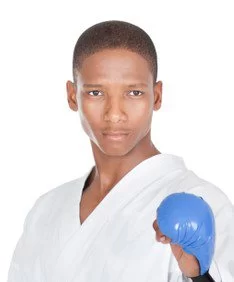
Hi, my name is Godwin. I am a passionate martial artist with black belts in Taekwondo and Karate. I have over 15 years of martial art experience. I created this platform to enable me to help you learn martial art the right way.

